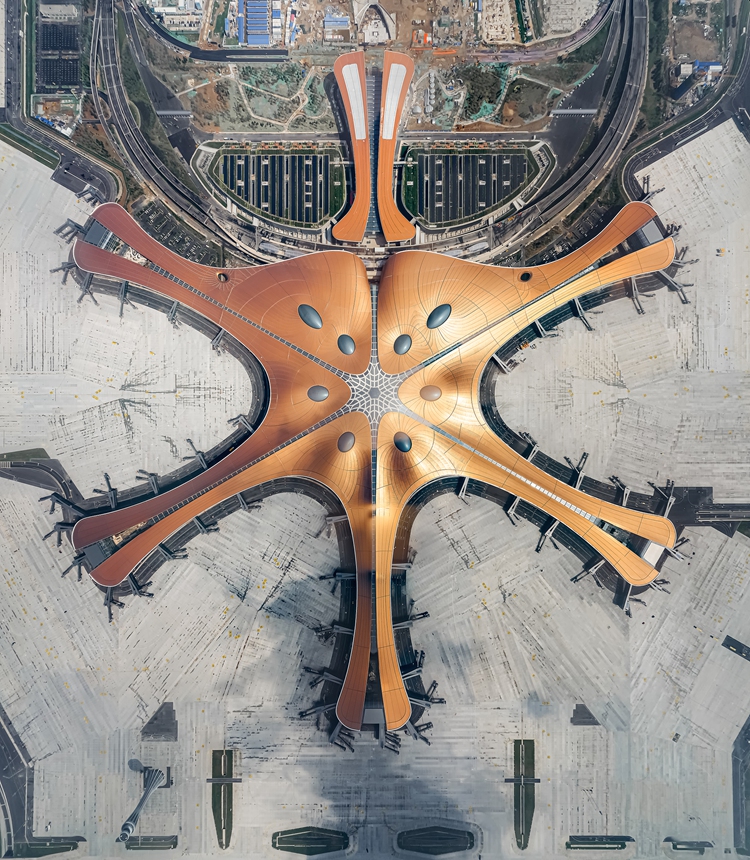Airlines suffer from low prices, overseas flights
By Tu Lei Source: Global Times Published: 2020/10/9 20:28:40

Daxing Airport Photo: VCG
The bleeding aviation industry in China has never been so desperate for a boom since the virus swept the world for more than eight months, and the recent eight-day holidays have given a boost to the industry's recovery.
The holiday data, no matter if it's measured by daily passenger or daily flight volume, is encouraging as their performance has returned to normal. However, the airlines, which seem to be busy carrying more passengers than previous months, are still finding it hard to see positive revenue results, amid low ticket prices and limited overseas flights.
China's civil aviation industry has seen 13.26 million passenger trips in the past eight days ending October 8, as the average daily passenger traffic and average daily flight volume reached 91.07 percent and 89.7 percent of the same period last year, respectively, the Civil Aviation Administration of China (CAAC) said on Friday.
CAAC said "travel for domestic tourism has recovered significantly," citing some routes, such as from Lhasa in Southwest China's Tibet Autonomous Region that could reach a load factor of more than 90 percent, which has been rare for several months.
In terms of transport capacity, carriers are shifting their flying capacity to domestic routes amid the country's strict overseas flying policy.
Budget carrier Spring Airlines, which said that its domestic seat-kilometers during the holidays increased by 51 percent year-on-year, added 52 new domestic routes this year, moving almost all of its international flights to domestic routes. China Eastern Airlines said more than 99 percent of their flights have been domestic.
Information provider VariFlight said the flight volume in the past eight days showed an average growth of over 12 percent compared to last year.
Although it is much better than their foreign peers, whose planes are grounded at the airports, this is not the whole story of China's recovery battle.
Qunar.com data showed that routes from Beijing to popular destinations such as Chongqing, Hangzhou and Xiamen were advertised at almost 50 percent off halfway through the holidays. Most worryingly, this price trend has not recovered, with the cheapest tickets, such as from Beijing to Chongqing, hitting 260 yuan ($38) next week, 86 percent lower than usual.
"Although the market is recovering, the airlines still have a long way to go, as ticket prices are slowest to recover, compared to the recovery of passenger traffic and the number of flights," Lin Zhijie, a market watcher, told the Global Times on Friday. He attributed the low fare to the oversupply of domestic flights.
As long as international flights remain suspended, the large amount of wide-body aircraft capacity and sufficient flight slots in international hubs such as Beijing, Shanghai and Guangzhou will suppress prices, Qi Qi, another market watcher, told the Global Times on Friday.
Experts also warned that limited overseas travel is still casting a shadow on the carriers' revenues for the second half of the year, as the eight-day holidays still failed to drive overseas travel, and the number of international and regional flights operated by Chinese mainland airlines continued to hover at a tenth of last year's level.
The industry continues to suffer severe losses since the outbreak of the pandemic, losing 34.25 billion yuan in the second quarter, 3.85 billion yuan less than in the first quarter, CAAC said.
Chinese giants such as Air China, the largest proportion of international routes in China, suffered the most losses in the first half of the year, followed by China Eastern Airlines and China Southern Airlines, Lin said.
China Eastern said in its half-year report that its passenger turnover on international routes had dropped by 73.64 percent, and its income on international routes was also down more than 61 percent. A note written by Guotai Junan Securities even predicted that the loss recorded by China Eastern in 2020 would rise to 9.333 billion yuan.
Airlines' income in the second half depends on supply and demand, but it is hard to see signs of recovery of international routes, given the current global pandemic, which will also dampen their yearly performance, Qi said.
Posted in: INDUSTRIES,BIZ FOCUS,AVIATION